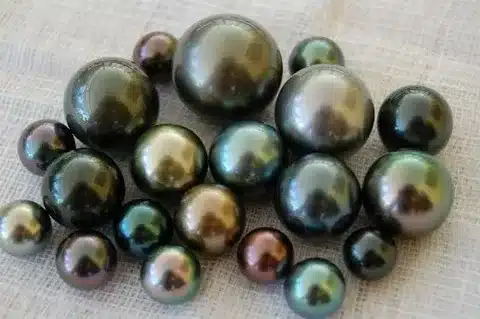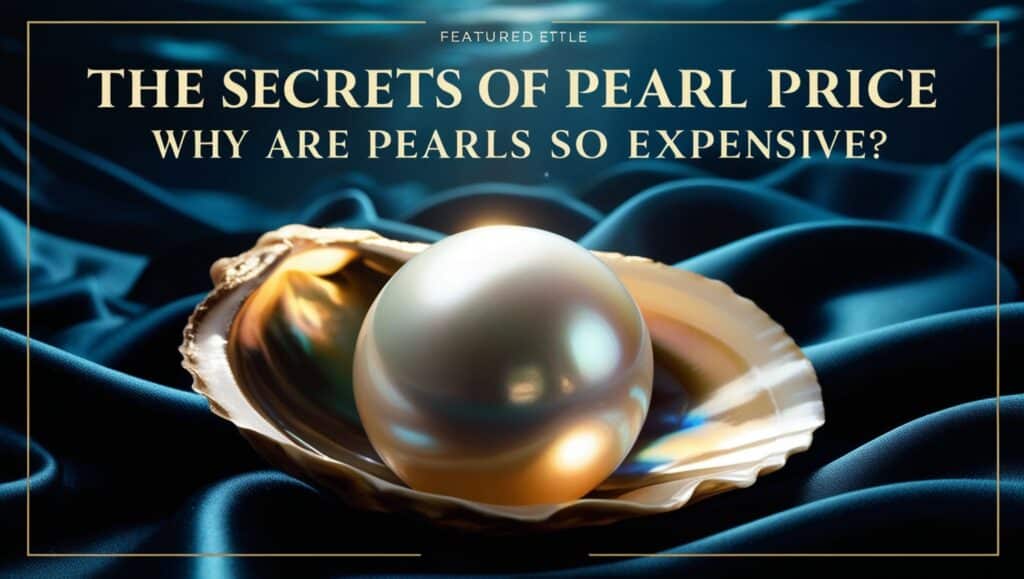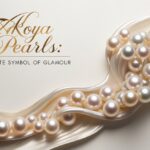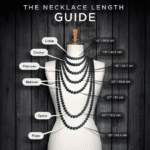Pearls have captivated humans for centuries, with their luminous glow symbolizing wealth, elegance, and purity. But why are pearls so expensive? If you’ve ever wandered into a jewelry store or browsed online, you’ve likely noticed the wide range of prices for pearls. While some are affordable, others carry hefty price tags, reaching into the thousands. The answer lies in the secrets of how pearls are created, the rarity of high-quality specimens, and the painstaking processes involved in their cultivation and harvest. In this guide, we’ll explore the factors that drive pearl prices and why some pearls are worth every penny.
The Unique Nature of Pearls
Unlike other gems, pearls are created by living organisms—mollusks such as oysters or mussels. Their formation begins when an irritant, like a tiny grain of sand, gets trapped inside the mollusk. In response, the mollusk secretes layers of nacre (a combination of aragonite and conchiolin) to coat the irritant, gradually forming a pearl. The more layers of nacre, the more lustrous and beautiful the pearl becomes. This natural process takes time, and not all pearls that form are perfect, contributing to their rarity and value.
Factors That Make Pearls Unique:
- Organic origin: Unlike diamonds or emeralds, pearls are created by living organisms.
- Nacre quality: The thicker the nacre, the more valuable the pearl.
- Shape and symmetry: Pearls with perfect round shapes are rare and command higher prices.
Discover The ultimate Pearl Guide: Nature’s Lustrous Treasures
Types of Pearls and Their Price Ranges
Pearls come in various types, each with its own price range depending on factors like origin, size, color, and luster. Understanding these types is key to grasping why pearls vary so widely in price.
| Type of Pearl | Price Range | Characteristics |
|---|---|---|
| Akoya Pearls | $100 – $10,000+ | Classic, saltwater pearls known for their perfect round shape and high luster |
| South Sea Pearls | $1,000 – $100,000+ | Large, luxurious pearls with a satin-like luster; often white or golden |
| Tahitian Pearls | $200 – $50,000+ | Alluring, dark pearls with shades of green, purple, and black; known as “black pearls” |
| Freshwater Pearls | $50 – $5,000+ | More affordable, with varied shapes and a softer luster; often found in pastel colors |
| Keshi Pearls | $100 – $20,000+ | Non-nucleated pearls with high luster and irregular shapes, considered a rarity |
Akoya Pearls

Akoya pearls are the quintessential pearls—round, white, and with a mirror-like luster. Cultivated mainly in Japan and China, they are the most common type of saltwater pearls.
Why They’re Expensive:
- Known for their symmetrical roundness.
- Thick nacre, contributing to their high luster.
- Labor-intensive cultivation process.
South Sea Pearls

Among the most expensive types, South Sea pearls are large, rare, and often golden or white. They’re primarily farmed in the waters of Australia, Indonesia, and the Philippines.
Why They’re Expensive:
- Longer cultivation time (up to 4 years).
- Large size, typically ranging from 9-20mm.
- Exclusive harvesting areas.
Tahitian Pearls

Tahitian pearls, or “black pearls,” are cultured in French Polynesia and come in a range of glamorous dark shades, including peacock green, purple, and deep black.
Why They’re Expensive:
- Natural dark colors are rare in pearls.
- Sought after for their unique and bold appearance.
- Limited production areas and high demand.
Freshwater Pearls

Freshwater pearls are cultivated in rivers and lakes, mainly in China. They are more abundant, which often makes them more affordable.
Why They’re Less Expensive:
- Easier to cultivate, often resulting in larger quantities.
- Varied shapes and less uniformity.
- Thinner nacre compared to saltwater pearls.
Find out How to wear Pearls Everyday for Effortless Elegance?
Factors That Influence Pearl Prices
1. Size
Pearls are typically measured in millimeters, and the larger the pearl, the more valuable it becomes. However, size alone isn’t everything. Quality and other factors play a significant role, too. Generally, a South Sea pearl can grow as large as 20mm, whereas Akoya pearls usually range between 6mm and 9mm.
Why Size Matters:
- Larger pearls require more time to form, meaning a longer cultivation process.
- Bigger mollusks are necessary for larger pearls, making them harder to harvest.
2. Luster
Luster refers to the glow or shine that pearls emit when light hits them. It’s the most crucial factor in determining a pearl’s beauty and value. High-quality pearls reflect light sharply, almost like a mirror.
How to Assess Luster:
- High luster: Clear reflections, sharp and shiny.
- Low luster: Dull appearance, minimal light reflection.
Luster depends on the quality of the nacre and how many layers the mollusk has secreted over time. Pearls with thicker nacre tend to have better luster, which increases their price.
3. Shape
While round pearls are the most valuable and classic, pearls can come in a wide variety of shapes. Here’s a list of common shapes and their impact on value:
- Round: The rarest and most valuable.
- Baroque: Irregular and unique shapes that are often less expensive but highly sought after for statement pieces.
- Oval and drop-shaped: These shapes are still desirable but tend to be priced lower than perfectly round pearls.
4. Surface Quality
The smoother the surface, the more valuable the pearl. Blemishes, spots, or irregularities on the surface can significantly decrease a pearl’s worth. Pearls are natural, so small imperfections are expected, but fewer blemishes mean a higher price.
Surface Grading Scale:
- A Grade: Minor imperfections, less visible.
- B Grade: Slightly noticeable blemishes.
- C Grade: More obvious blemishes that affect value.
5. Color
While many people associate pearls with the classic white hue, they actually come in various shades, including cream, pink, lavender, black, and even gold. The rarity and demand for certain colors can significantly affect prices.
Pearl Color Categories:
- White and Cream: Most traditional and widely available.
- Golden: Rare and often seen in South Sea pearls, making them more expensive.
- Black: Exclusive to Tahitian pearls, adding to their allure and price.
6. Nacre Thickness
Nacre is the material that gives pearls their luster. A pearl with a thick nacre layer has a richer shine and is more durable, which translates to higher value. Thin nacre pearls may appear chalky and are prone to damage.
Why It Affects Price:
- Thicker nacre results in better luster and longevity.
- Thin nacre can crack or peel over time, reducing the pearl’s value.
You might also like Tips for safely storing your jewelry
Why Cultured Pearls Are More Common (And Still Expensive)
Most pearls you’ll find on the market today are cultured rather than natural. Cultured pearls are formed when humans manually insert an irritant into a mollusk to kickstart the pearl formation process. Natural pearls, which form without human intervention, are incredibly rare, making them far more expensive.
Why Cultured Pearls Are Still Valuable:
- The cultivation process is labor-intensive and requires expert handling.
- Not every mollusk produces a high-quality pearl, even in controlled environments.
- Harvesting pearls takes years, meaning there’s a significant time investment before the pearls reach the market.
The Cultivation Process:
- Insertion: A technician inserts a small bead or piece of tissue into the mollusk.
- Nacre Formation: The mollusk secretes nacre to cover the irritant, forming layers over time.
- Harvesting: After 1-4 years, the pearl is harvested and inspected for quality.
Despite being cultured, these pearls still require years to form, and only a fraction of the harvest will be of high enough quality to sell at premium prices.
The Hidden Costs of Pearl Production
The final price of a pearl also reflects the hidden costs involved in its production, from farming techniques to the environmental factors affecting mollusk health. Here’s a breakdown of the lesser-known expenses that impact pearl prices:
Labor and Expertise
Pearl farming is a highly specialized skill. Technicians must carefully insert irritants into mollusks, monitor their health, and ensure proper environmental conditions. Mistakes at any stage can result in poor-quality pearls or even death of the mollusks.
Why Labor Costs Matter:
- Skilled labor is essential for high-quality pearls.
- Farmers often operate in remote coastal regions, adding logistical challenges.
Environmental Factors
Pearl farming is sensitive to environmental changes. Water temperature, salinity, and pollution can all affect mollusks’ health and pearl quality. Sustainable pearl farms require careful management of marine ecosystems, which adds to the operational costs.
Time Investment
Pearls take years to develop, especially high-quality ones. The time it takes for a pearl to form—anywhere from one to four years—means that pearl farmers invest significant time and resources before they can even begin to profit from their harvest.
Must read What does a pearl ring symbolize?
Case Study: Why South Sea Pearls Are the Most Expensive
To better understand
why certain pearls cost more, let’s take a closer look at South Sea pearls, which are often the priciest on the market.
The Key Factors:
- Size: South Sea pearls are among the largest, often ranging from 9mm to 20mm in size.
- Color: These pearls come in a stunning range of whites, creams, and golden hues, with golden South Sea pearls being particularly rare and expensive.
- Luster: South Sea pearls have a unique satin-like luster due to their thick nacre, which takes years to develop.
- Harvesting Locations: These pearls are primarily farmed in limited regions, such as the waters off Australia, Indonesia, and the Philippines, adding to their exclusivity.
Conclusion: South Sea pearls are more expensive due to their rarity, large size, long cultivation time, and stunning luster.
Conclusion
Pearls have always held a special place in the world of luxury and elegance, and their price reflects the time, effort, and rarity behind each gem. Whether it’s the long cultivation process, the skillful labor, or the environmental factors at play, every pearl tells a story of nature’s beauty and human craftsmanship. Understanding why pearls are expensive helps you appreciate not only their beauty but also the intricate journey they undergo before adorning your neck, wrist, or ears. When buying pearls, remember that their value goes beyond their price tag—each pearl is a unique treasure formed by nature’s own hand.

Astro Sari is a seasoned blogger with a deep passion for pearls and oceanic gems. With years of experience in the field, he brings insightful knowledge and engaging content to Pearl Mystique. His expertise helps readers explore the beauty, history, and significance of pearls in a captivating way.







